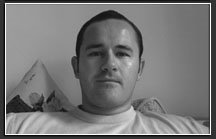GT:Africa .:. Pre-Mali
 2nd Stop
2nd Stop
Planned Attendance: August 2nd - August 20th, 2007
Mali is full of ancient history. Rock paintings and carvings in the regions around Gao and Timbuktu suggest that northern Mali has been inhabited since 50,000 B.C. when the Sahara was fertile grassland with an abundance of wildlife. Fast-forwarding to the 6th century A.D. sees a lucrative trans-Saharan trade in gold, salt and slaves; all of which contributed to the rise of Mali's three great empires - The Empire of Ghana, Mali and Songhaï.
The Empire of Ghana (not the country) offers legendary tales of riches in the form of gold. It is rumored that the streets were paved in it and that the emperor of Ghana routinely tied his horse to a nugget of pure gold. The Empire of Mali saw the peak of the trans-Saharan trade and the development of major financial and cultural centers including Timbuktu. Islam is embraced. Later, the Empire of Songhaï sees emperors travel to Mecca with 300,000 gold pieces and the creation of a professional army and civil service. What is today known as Mali was at the center of all three empires.
Invaded by the French in 1880 and set up as a cheap source of cash crops like cotton and rice, Mali became a shadow of its former glory. Gaining independence on August 5th, 1960, Mali saw 20 years of government mismanagement, frequent droughts, and from 1970 to 1990 five coup attempts.
In 1990, a group of nomads called the Tuareg began to fight back against the Malian forces in Gao. The Tuareg uprising, as it is known brought about (through a number of events) the election of Alpha Oumar Konaré in June of 1992. Konaré quickly implemented reparations to the Tuareg, appointed opposition members to his cabinet and even stepped down from power in 2002 to allow for elections.
The Stats:
Land Area: 1.22 million sq km (just under twice the size of Texas)
Average Temp: 22 / 31 (Low/High, Bamako in August)
Average Humidity: 94 / 73 (am/pm, Bamako in August)
Precipitation: 348mm (Bamako in August)
Population: 11,995,402 (July 2007, est.)
Infant Mortality: 105.65 deaths per 1,000 live births
Life Expectancy: 49.51 years
Fertility Rate: 7.38 children born per woman
Literacy: 46.4% overall, 53.5% / 39.6% (Male/Female, 2003)
HIV/AIDS Prevalence: 1.9% (140,000 living with, 2003)
Infectious Diseases: Hep A, Typhoid, Malaria
Major Religion(s): Muslim - 90%
Official Language(s): French, Bambara
GDP per capita: $1,300 (2006, est.)
Occupation Distribution: 80% Agriculture, 20% Services (2001, est.)
Unemployment: 14.6% (2001, est.)
Pop. below poverty line: 64% (2001, est.)
Sources: Lonely Planet West Africa, CIA World Factbook, Wikipedia


No comments:
Post a Comment